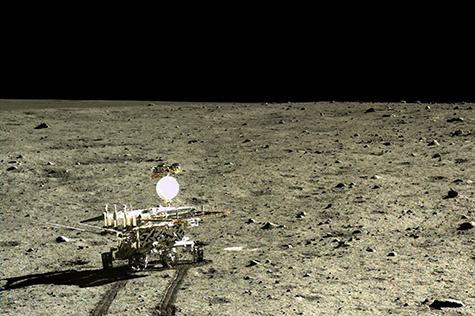ST. LOUIS, Dec. 22 (UPI) — Chinese scientists say they’ve discovered a new kind of rock on the moon. The rock was discovered by China’s Yutu rover, part of the country’s Chang’e 3 unmanned lunar mission.
The small rover, deployed in 2013, discovered the never-before-seen mineral composition in an ancient lava flow in the Mare Imbrium. The Mare Imbrium is a formation created when lava filled an ancient lunar crater.
A more recent impact in the middle of the Mare Imbrium, known as Zi Wei crater, exposed the ancient basalt beneath the mare’s surface. When the layers of the mare’s lava cooled, they formed a type of rock unlike anything geologists have ever seen on the moon.
The rock’s composition is detailed in a scientific paper published in the journal Nature.
Scientists believe the lava flow recently sampled and analyzed by Yutu is about about 3 billion years old — relatively young compared to previously studied lunar rocks.
Because the lava flow is relatively young, its composition hasn’t been compromised by errant debris from space. Its mineral composition is likely similar to the deeper basalt. Data from lunar orbiters suggest this type of basalt may also be present in other regions of the moon.
“The diversity tells us that the Moon’s upper mantle is much less uniform in composition than Earth’s,” Bradley Jolliff, a professor of Earth and planetary sciences at Washington University in St. Louis and the only American on the Chinese research mission, said in a press release. “And correlating chemistry with age, we can see how the Moon’s volcanism changed over time.”
Mineral composition is affected by how fast and at what temperatures magma cools. The latest discovery may lend clues as to the behavior of the moon’s molten center billions of years ago.





